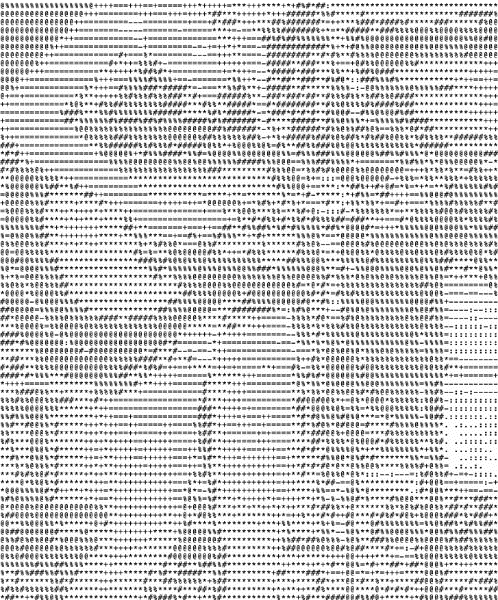Howdy, y’all, and welcome to this special edition of Random Thursday. This is actually more of a rabbit trail edition, because I initially set off in one direction and ended up meandering through a number of alternate realities subjects.
It all began when Jen, a fellow blogger from Ye Olde Dayes and current Facebook friend posted the following Instagram reel (use the link if the embed looks wonky: https://www.instagram.com/reel/C8HYksesKFK).
Being the cynic that I am, I immediately suspected that an AI trick was involved, but a visit to the guy’s website convinced me otherwise. It’s apparent that his brain is wired much differently than mine, with a savant-like skill that I can’t comprehend.
Rabbit Trail #1 — Same but different
Interestingly, he’s not alone. Paul Smith (1921-2007) was born with a severe case of spastic cerebral palsy. Smith not only defied the medical odds by living to age 85, but he taught himself to “paint” with a manual typewriter, using only the symbol keys aligned across the top row of the machine. Here’s a video that showcases some of Smith’s creations:
James Cook’s and Paul Smith’s techniques and created works are quite different, but they share the same fundamental creative idea: repurposing a machine for a use much different than its original intent.
Rabbit Trail #2 — Different strokes for different folks
Cook’s technique brought to mind a much simpler use (simpler as in “cave drawings vs. the Sistine Chapel”) of typewriter symbols and letters: ASCII artwork.
A quick ASCII primer for youse kidz, via ChatGPT:
ASCII stands for American Standard Code for Information Interchange. It is a character encoding standard that assigns numeric codes to represent characters in computers and other devices that use text. ASCII codes represent text in computers, telecommunications equipment, and other devices.
ASCII defines codes for 128 characters, including letters (both uppercase and lowercase), digits, punctuation marks, control characters (such as carriage return and line feed), and non-printable characters.
I first encountered ASCII artwork in my first job out of college, working in the ARCO Oil & Gas Company’s accounting department in 1975. ARCO, like every other major corporation, conducted all of its computerized business on Big Iron: IBM mainframe computers. We accessed the computer via Texas Instrument Silent 700 dumb terminals (we would make a giant technological leap to CRT terminals a year or so later) which employed a dot matrix printer and a long roll of paper to print out archived copies of reports and other documents.
Someone — and I suspect they were the nerds/gods that worshipped at the altar of the IBM System/370 Model 165 located on the 7th floor, where we accountants would carefully tote punch-card decks and implore the operators to pleeeeeease run them as soon as possible — had programmed a routine and loaded it in a publicly-accessible location on the mainframe, which, when executed, would print out a three feet long ASCII picture of a long-haired, disrobed woman sitting demurely on a stool. It was an ill-kept secret which today would cause every HR employee in the world to retire to a fainting couch. It was, as they say, a different time.
Anyway, ASCII art is still alive, and if not exactly well, it’s still residing in the independent living wing and watching Twilight Zone reruns with the volume turned up to eleven. What’s more, with the miraculous advent of modern technology, we no longer need to know how to code or even understand how it works; we can just upload a photo or enter a string of text into free converters like this one, and voilà: ASCII “artwork” appears.

The above-linked website has a gallery of artwork submitted by users, organized into subject matter sections, including one that contains the forbidden image from the Seventies that I described earlier. Hey, these posts require actual research, y’know?
Rabbit Trail #3 — More ancient office machinery
The memory of those Silent 700 terminals led me to another recollection. Some of the accounting clerks in the group to which I was assigned as a trainee had impressive command of comptometers, the ancient predecessors of 10-key adding machines and calculators. I don’t recall the manufacturer or model of the device used in our department; it might have been this one from Sharp. Frankly, I was never allowed to use one; the clerks were fiercely protective of their machines. That was fine with me, as I found them to be quite intimidating (the comptometers, but also the clerks, each of whom had approximately 600 years of experience).

Rabbit Trail #4 — Oh, look…a baby squirrel!

Discover more from The Fire Ant Gazette
Subscribe to get the latest posts sent to your email.

